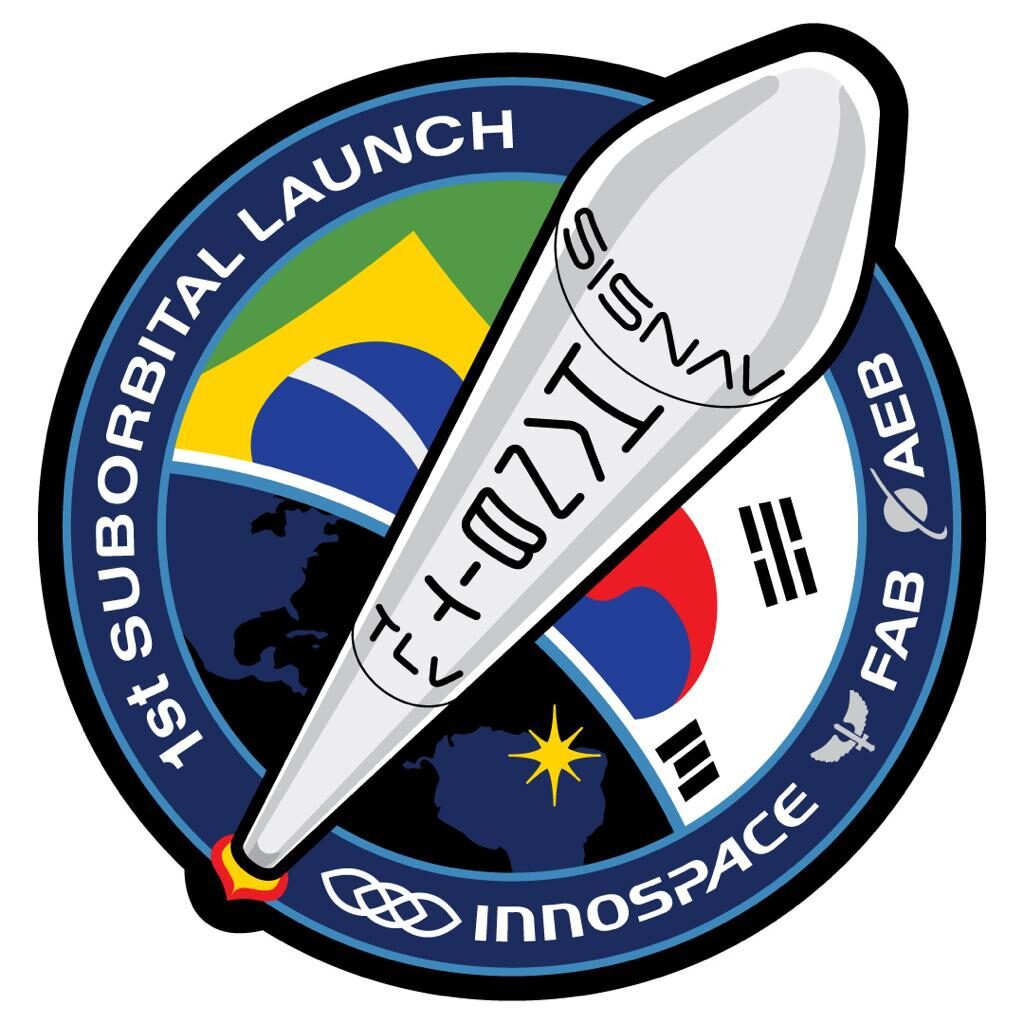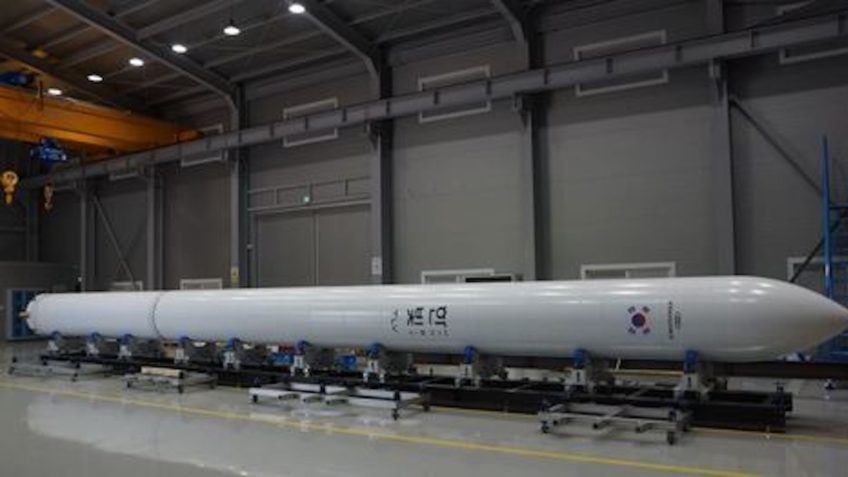The launch is the result of a partnership agreement between DCTA and the South Korean company INNOSPACE
The Brazilian Air Force (FAB), through the Department of Aerospace Science and Technology (DCTA), and the South Korean company INNOSPACE signed, in early 2022, a partnership agreement to launch the HANBIT-TLV rocket and the SISNAV payload flight test, an operation that demonstrates the national capacity to develop space technologies and launch rockets, endorsing Brazil’s commitment to maintain the sovereignty of the air space.
The launch campaign, named Operation Astrolabe, will take place from the Alcântara Launch Center (CLA), a unit subordinated to the Brazilian Air Force.
The HANBIT-TLV is a satellite launcher that measures 16.5 meters long and weighs 8.4 tons. The rocket, developed by the company INNOSPACE, uses a patented electric pump feeding system, as well as hybrid technology, i.e., with propellants based on liquid oxygen and a paraffin mixture, which provides stable chemical composition, faster manufacturing and lower cost.
“INNOSPACE is very proud of all the work done so far, because it took many months of study, planning and preparation of the teams. This operation will be marked by synergy, effort and pioneering. We will be part of the history of the Space Program,” said the Business Director of INNOSPACE do Brasil, Élcio Jeronimo de Oliveira.

The vehicle is equipped with a payload called the Inertial Navigation System (SISNAV), developed by military and civilian professionals from the Institute of Aeronautics and Space (IAE), which is part of DCTA.
SISNAV is an essential Brazilian technological experiment for autonomous rocket navigation, which will allow Brazil a major step towards independence in the development of vehicles for launching satellites of all types. The SISNAV project is part of the Navigation and Control System (SISNAC), planned for the FAB’s Microsatellite Launching Vehicle (MLV), focused on low orbits in the so-called New Space.
In the past, satellites were larger and, when launched, stayed in high orbits for long periods. The arrival of New Space revolutionized the space market. It is a concept that prioritizes the launch of smaller and lighter satellites, planned to orbit for shorter periods in lower orbits, which reduces the need for large areas and also allows the use of smaller rockets to perform the operation. In this sense, CLA emerges with great potential, having its agenda available to companies worldwide.
Another advantage of New Space is the participation of small innovation companies, many of which are startups, enhancing the development of space research due to the constant update of the technologies involved and their low cost.
“Operation Astrolabio is the result of an unprecedented integration that is extremely relevant for our country and for the world. Through this partnership, we will strengthen and train the national industry in aerospace and defense technologies with added value and high level,” explained DCTA’s Director, Air Lieutenant Brigadier Maurício Augusto Silveira de Medeiros.
Regarding the safety of the Operation, the CLA Director, Colonel Engineer Fernando Benitez Leal, reinforces that the trajectory of the vehicle will not pass through inhabited areas and the impact points of the propellant and the payload, which fall into the Atlantic Ocean, will occur more than 50 km from the coast, offering no danger to the population or environmental damage.

“The impact area is interdicted for navigation by means of warnings to navigators and notifications to aircraft, thus avoiding overflight. In addition, the FAB also provides support with patrol aircraft, developing a work of clarification of the impact area to certify that there are no vessels at risk. The Brazilian Navy and the Brazilian Air Force, through CLA, also advise fishermen in the nearby villages, as well as ships passing through the port, about the existence of the operation. All and any activity related to the launch (launcher handling, preparation, assembly and testing of the vehicle, as well as its launch) is carried out in accordance with international safety standards, as described in the Center’s Operational Safety Manual and associated emergency plans,” said the CLA Director.
Besides IAE, other institutes from DCTA were also involved in the mission, such as the Instituto de Fomento e Coordenação Industrial (IFI), responsible for analyzing the vehicle’s conformity to the operation rules defined by the Brazilian Space Regulation, in addition to checking all the critical elements of the project, so as to ensure ground operational safety and flight safety (trajectory and impact point dispersion) without the occurrence of damage.
“We are facing a unique opportunity, because this mission promotes the technical and operational development of the teams involved in hybrid propulsion technology, evaluation of the SISNAV flight performance and tracking systems, data transmission and reception. In this way, we strengthen the Brazilian Space Program, showing the world Brazil’s ability to develop aerospace technologies, valuing the national industry,” concluded the General Coordinator of the Operation, Air Force Colonel Rodrigo José Fontes de Almeida.

*** Translated by the DEFCONPress FYI Team ***
